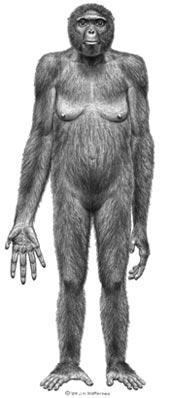I know I said something about my "last post of year" but I found something interesting that I wanted to post right now before the end of the year so we can think a little about it. It's not a post of mine, so, someway the former post will still be the last post of the year... my english still sucks... Hope you actually understood what I wrote above.
Well, here it goes. Hope you enjoy it the way I did.
Happy Holidays!
Source: Bitesize Bio

Perhaps at no other time of year like the winter solstice is the mixture of religious beliefs and daily life more intertwined. Most people, regardless of race and country of origin, come from a faith that believes in God or a Higher Power.
As scientists, it is a widely held belief that we do not believe in God because of our passion for truth. Some think that science and God do not mix and cannot mix; that you cannot be a scientist and actually believe in a higher power or a universal source of knowledge that is not measurable by any lab test.
My experience of what scientists believe
When I speak to my colleagues and friends in the science community, I actually find the opposite belief to be true. Most people I speak to not only believe in God, but in the paranormal, spiritual, and supernatural. We can’t measure any of this with a DNA or RNA test, yet for some, proof is not always something you can hold in your hand. What I have found is that for most scientists, their own experience is proof enough.
This makes sense to me because as scientists, we are trained to have an open mind and to not let our personal biases sway our results. Scientists need to be open to any and all possibility in order to make progress. So a scientist who has experienced divine guidance or intervention, while knowing that there is no explanation with physical laws on how such a thing could have happened, has all the evidence they need to know fact from fiction.
The stats
The stats say that the split is about 50-50 of those who believe in God and those who do not. A survey taken by the American Association for the Advancement of Science (AAAS) in May and June of this year and reported by David Masci in the Los Angeles Times, found that 51% do believe in God and 41% do not. These numbers haven’t changed much over the last 100 years either, despite the numerous discoveries in evolution and biochemistry over the years.
The same poll found that 41% of chemists believe in God while scientists in the fields of biology and medicine were much less likely to believe in God (32%). In terms of age, the younger generation of scientists (18-34) are more likely to believe in God than their senior colleagues.
In comparison, the scientific community tends to believe less that the general public do. 95% of American adults say they believe in a God or higher power and only 32% believe in evolution whereas 87% of scientists believe that life evolved over time.
Based on this data, it would suggest that for many of us, science and religion are not necessarily incompatible and one does not need to choose between the two. We can believe in a higher power and evolution. We can experience things not explainable by science and not need to write it down in a lab notebook as proof it happened.
Many of our scientific predecessors believed in God; Sir Francis Bacon (1561-1627), Rene Descartes (1596-1650), Robert Boyle (1791-1867), Gregor Mendel (1822-1884), and Albert Einstein (1879-1955). Even under persecution for teaching that the sun was the center of the universe, Galileo Galilei (1564-1642) maintained his faith in God. And Galileo had no proof that his theory was true using the tools available to him at the time.
Brilliant minds over the ages have recognized that there are some things we can’t explain but that doesn’t mean they aren’t true. Sometimes all you have to base your theories on is a hunch or a feeling or indirect evidence that there is more to this than meets the eye. Does it mean we reject everything that doesn’t fit our cozy model because we can’t measure it in a test tube? No. It means we keep an open mind until we can.
Here’s what I think
I love science because I love the process of solving the riddle and uncovering the clues to unraveling whatever problem I am trying to solve. I love the process of discovery and not just the end result. Fortunately for us scientists, there is an infinite number of puzzles to tackle in the universe and things to discover. Thank God for keeping a few things secret.
About the author:

Suzanne Kennedy
Suzanne is Director of R&D at a small biotech company in California. She has a PhD in Microbiology and Immunology from Virginia Commonwealth University.
I found this post very interesting because it's something everyone thinks and actually cares but just some people talk about. I must say I beleive in something more, something hidden, something that we cannot see with our eyes but we feel and try to understand not with our eyes, ears or senses but our soul perhaps (hope someone else believes in soul as well as I, hehe).
C'ya!
































 Tabla 1. Resultados enviados por correo de la búsqueda de dominos
Tabla 1. Resultados enviados por correo de la búsqueda de dominos













 VS
VS

